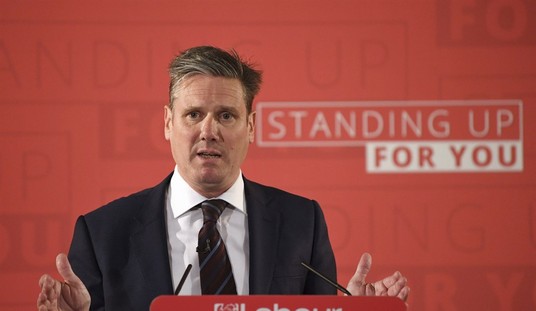The good news: the Federal Reserve doesn’t appear to be considering another inflation-producing round of quantitative easing. The bad news: what they are considering, called a “twist” strategy, won’t help much, either. According to the Washington Post, the Fed might start buying long-term Treasury bonds but will fund the purchases through sales of its holdings on short-term bonds:
The Federal Reserve is moving toward new steps aimed at lowering interest rates on mortgages and other kinds of long-term loans, without making another massive infusion of money into the economy.
When Fed officials hold a pivotal meeting in two weeks, they will strongly consider buying more long-term Treasury bonds, which should lead to lower interest rates for those bonds and other long-term investments. This would ultimately make it cheaper for businesses to borrow money for investments and push more dollars into the stock market, in addition to reducing rates on mortgages and other consumer loans.
To pay for the bond purchases, the Fed would sell off some of the shorter-term bonds it already owns rather than printing new money.
In this case, the outrage against QE2 paid off. The Post reports that the Fed wants to avoid a political fight over another expansion of the US dollar, especially given the wan results of QE2. Without deflation as a serious threat, there is not much need to artificially flood the market with dollars, which would have economic as well as political repercussions. The Fed believes that they can get “a similar benefit” from this approach — which calls into question why they didn’t try this first instead of QE2.
Besides, “a similar benefit” would be a low bar to clear. The voyage on the QE2 didn’t deliver economic expansion, as subsequent GDP reports showed; the best the Fed can argue is that they prevented a bigger slide, a hard point to prove. In this case, the stated goals are solutions searching for problems. Businesses aren’t expanding from a lack of access to commercial loans — they’re not expanding because investors can no longer reliably calculate risk in the current US regulatory environment. The Obama administration’s whimsical and aggressive push to rule by decree in ObamaCare, Dodd-Frank, the EPA, and other areas has capital rightly sitting on the sidelines.
Home buyers are also not sitting out by choice. We already have one of the best buyer’s markets in a generation, or perhaps generations. We have a glut of foreclosures keeping valuations down and the lowest mortgage rates in decades — for qualified buyers, and that’s the problem. We don’t have enough qualified buyers, and with the glut of inventory and the foreclosure epidemic, current homeowners aren’t selling and looking for new digs, either. The problem of negative equity for those who can still afford their mortgages is another problem:
The idea of shifting the composition of bonds the Fed already owns — sometimes known as a “twist” operation — is not without downsides, however. Interest rates already are very low, and pushing them down further may not have much effect. One major aim would be to encourage people to refinance their mortgages, freeing up money to spend on other things and foster economic activity. But with so many people owing more on their homes than the homes are worth, relatively few are in a position to take advantage of lower rates to refinance.
The net effect would be to shave perhaps 0.2% off of mortgage rates, according to an analyst from JP Morgan quoted in the article. That won’t solve the problem of negative equity, nor will it qualify buyers who aren’t qualifying now. The new Fed program won’t do any damage, but it’s not going to help, either.








Join the conversation as a VIP Member